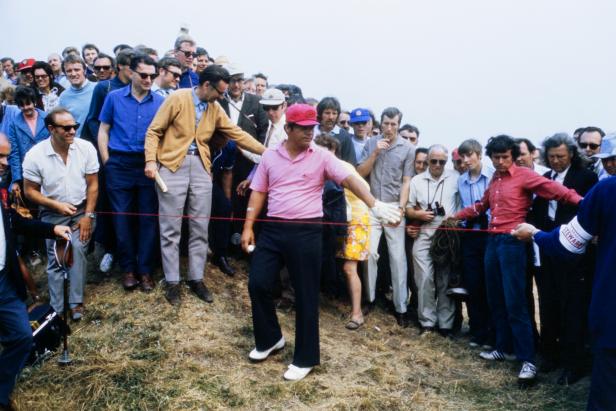In my garage at home is a red canvas, cylindrical shag bag with a protruding aluminum tube that retrieves golf balls without back strain. It’s my longest serving piece of golf equipment in continuous use. The Original Shag Bag was invented by Clifford Hurd and Ian McDonald in 1948, and the same company, Madewell Products, has manufactured them in the United States ever since. By the early 1970s when I took up the game, owning one was a rite of passage, and every self-respecting golfer had a shag bag.
As a teenager on a par-63 muny in northeast Philadelphia, I would hang out behind the right greenside bunker on No. 18 and hit half wedges onto the green when nobody was coming. Then I’d suck up the balls in the shag bag—puh-plok, puh-plok, puh-plok—and repeat this routine behind the left greenside bunker. They were the afternoons of a misspent youth.
My wedge hero in those days was Lee Trevino, who could check low-flying shots to a grinding halt after not one or three, but two—always two—bounces. I used to go with my dad to the old IVB-Philadelphia Golf Classic at Whitemarsh Valley Country Club, and we would watch in amazement while Lee hit balls as if they were yo-yos on a string. He knew how to “walk the dog.”
For my money, I didn’t aspire to launch 1-irons like Jack Nicklaus or Tom Weiskopf; I wasn’t even impressed so much by Ben Crenshaw’s languid putting stroke. (This was long before Phil Mickelson had perfected the 64- degree lob over a man’s head standing five feet in front of him.) Back then, what I coveted were those clothesline wedges that screeched to the hole.
Trevino was the genius I studied most. He had just beaten Nicklaus in the 1971 U.S. Open at Merion Golf Club with a dazzling wedge game. “I love Merion, and I don’t even know her last name,” he quipped. His backswing was compact, and he kept the clubface open. I once heard him say, “Wedge shots are hit by the body turning, not the arms swinging. You need a good tight lie. Play the ball back in your stance, and as soon as you start the downswing, turn your left hip, and the hands have got to follow around to the left.”
I read he developed control of the clubhead as a kid rounding up practice balls by hitting them with only his left hand. When you hit down on the ball, you compress it against the ground, and the feeling is that you’re squeezing the ball up the grooves of the face, adding backspin. “You can smell the rubber burning,” Trevino liked to say.
I recently asked Tom Watson if my memory was right, and he doubled down. “One of the most vivid memories I’ve had,” he emailed back, “is when Trevino hit his third shot to the par-5 18th during the Players Championship at the old Sawgrass Country Club in 1980. The wind was blowing 30 miles an hour at his back, and he hit the shot, head high, downwind, and it looked like it was going to be over the green, but it took two hops and put on the brakes. One of the best shots I’ve ever seen! Trevino was the best at controlling the golf ball during my era of play.” (I looked it up, and there’s a video of the winning shot exactly as Tom described.)
One year I decided to practice only with my wedges and went 12 months never hitting a practice ball with any other club. I wore out my shag bag—puh-plok, puh-plok—and my handicap was the lowest it has ever been. Decades have passed, and the memory is still sweet. I never found that discipline again. I remember it as my Trevino Season.
